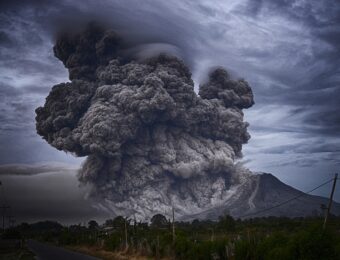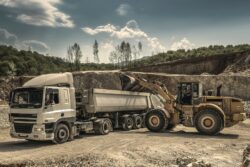Name of Product: Remin Volcanic Rock Dust Soil and Compost Remineraliser
The Best Place to Buy: www.amazon.co.uk
Product Dimensions: 49cm x 39cmx19cm
Shipping Weight: 21.06kg
My Score: 5/10
In this article, we will be discussing if the gardener needs rock dust on their garden. Will the product benefit it in any way by using it or is it a lot of hot air.

Rock dust is a very popular soil additive to some gardeners who swear by it, whilst for others, they are less convinced. It has caused arguments in the gardening community and I want to address this issue once for all. Does rock dust really works or is it the power of marketing over substance.
They are full of elements and nutrients that it does make sense that by adding it to soil and compost it should replenish it. When we grow our plants and crops on the soil a lot of elements are up taken, which over time will diminish what is available to these plants. The question that arises, can rock dust replace these lost elements that have been taken from the soil? Well in this article this question will be laid bare.
WHAT IS ROCK DUST?
The easiest way to understand what rock dust, it is the waste produced when rocks are milled to a fine powder. This can be from quarrying, cutting granite or it can be found near volcanoes and consists of mainly basalt rock.
To be used effectively the rock must have a large surface area as possible, which means that the particles will need to be as fine as possible to allow the elements to be accessed by the microorganisms and decomposed by the environment.
When we talk about rock dust as a garden product, then we often talk about products from volcano rocks and we do not include other minerals such as limestone or phosphate rocks, which are also used by the gardener.
To be classified as a fertiliser it must contain the primary macronutrients nitrogen, phosphorous and potassium, but as rock dust does not contain these elements in appreciable amounts, then we can safely say it is not a fertilizer. It is classed as a soil conditioner or improver.
Rock dust is claimed to add all sorts of elements back to the land; all or some needed to help plants grow. All the manufacturers make a lot of bold claims and Remin is no different. Claims such as bigger, healthier plants, better blooms, higher yields of fruit and vegetables, fewer pests, fewer diseases, replacement of elements the soil is lacking.
HELPS TO REPLENISH MISSING ELEMENTS IN THE SOIL
To able to do this the soil must be unbalanced, lacking element and that this unbalance soil is affecting its ability to produce healthy, flourishing plants.
The problem with this is that the composition of soil varies widely from area to area, location to location and so does the number of elements that are present. Plants will adjust to what is available to them and so there’s no such thing as the right mineral balance. Plants all have different needs, some requiring more of a certain element, whilst others require more of another element.
It must be noted that plants can function when the full range of elements are available to them, but they will not be the healthiest. They will need a source of primary and secondary macronutrients and trace elements in the right amounts or the plant will not function well and die.
The problem with rock dust is that it has elements that are not required by the plants. Elements such as Lanthanum, Cerium and Praseodymium.
ROCK DUST MUST BE CONVERTED
Volcano rocks contain basalt rocks that will not be processed or transformed by the environment. They are unaltered as they come out from the volcano as larva, the elements cannot be used by the plants until it is converted into a useable form.
Rock dust will be unavailable to the plants any time soon. This is because a lot of the minerals are water-insoluble and therefore will not leach out of the rock dust. To get a good mass transfer of ions the rock dust must be porous and contain soluble compounds. If it is not porous and does not contain soluble compounds and it will remain inert in the rock dust and be unavailable to the plants.
Rock dust does contain a vast array of inorganic compounds (often called minerals), all having different solubilities. A good quality rock dust can have 90 minerals in it. The biggest problem is that plants do not need all these elements. From my previous article on what elements are required by plants, you will know at best plants need 20 elements, This could mean that up to 70 other minerals are not needed and are a waste to add to the soil. A case of too much marketing over substance.
HOW MUCH TO ADD
It is recommended that you add from 500 g to 2kg per square metres or in more measurable terms, a handful per square metre. This means one 20kg bag can make enough for 10 to 40 square metres, where it should be mixed with the soil.
For compost, it is recommended to mix 2kg per 50 litres of compost. The rock dust and compost have to be mixed well before it is used. Strangely, a product can be dosed so diluted or concentrated depending on what plant you wish to grow. Over-fertilising can result in the leaves and roots getting burned.
The biggest challenge is does rock dust decompose fast enough to be used by the plants?
There is no doubt rock dust add minerals to the soil but so would adding rocks you buy from the builders’ merchants. This will not help the plant to grow, but unless the elements become available to the plant, there is little point in adding rock dust.

Research has indicated that it takes hundreds to thousands of years to break down, but no rock dust manufacturer will tell you this, as it will be too revealing.
Can you imagine if you add rock dust and it takes 100 years or more to become available that you will not see the benefits in your lifetime?
The next question to ask; does the soil need rock dust in the first place?
Is it deficient in an element in some way? Often your plants will tell you if in some way it is deficient. Read my article on elements and it will help you identify what deficiency exists in your plants and how they manifest themselves.
Let the plants be the guide and if no deficiency is noted then why waste your time on adding rock dust.
IS IT BACKED UP BY RESEARCH?
Most papers on this subject show that there is no or little improvement in plant growth when rock dust has been applied. I got to admit that limited fieldwork has been done, most have been done in a lab and none has shown improvements in the soil quality.
The science suggests it has little value and it is useless if the soil is already alkaline. It may help to increase the drainage as it will make the soil more free-flowing, but it is not worth the price to do so. There are cheaper ways of doing this.
Rock dust contains a large amount of calcium-containing compounds, which could raise the pH, turning it increasingly alkaline. This has the effect of locking in the elements, making them less available to the plants.
PROS
- Can improve drainage.
- Supple some nutrients.
CONS
- Expensive.
- Little evidence that it will increase yields and will produce healthier plants.
- Very dusty to use and can irritate the lungs.
- Heavy to move around.
CONCLUSIONS
In this article, we have reviewed if rock dust is needed by the garden. I have used it in the past and I can tell you it has done nothing to my garden. No bigger yields, the plants are not healthier and it was a big let-down. I do not recommend it to every garden and unless you want to prove me wrong, I would not buy it. I would instead use other and better soil conditioners or composts that are naturally produced.
If you have anything to say on this topic or questions, please do so in the comment box below.
Be wise in your choice.

